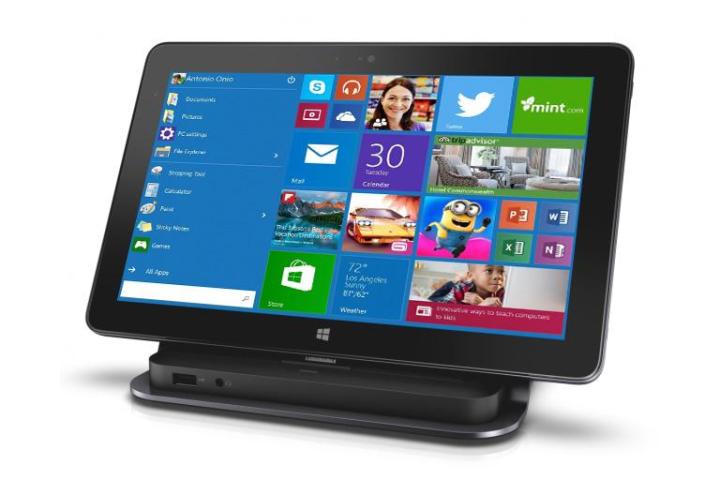
Other new features include revamped Mail and Calendar apps. Users now have the ability to toggle quickly between their mail and calendar, and Mail includes customizable swipe gestures. Similar to Microsoft Word, Mail also lets you easily insert tables, photos, text colors and bullets into your messages. Mail and Calendar support Office 365, Exchange, Outlook.com and Gmail in this most recent build.
You can resize the Start menu in Build 10061, and the color and transparency of the Start, Taskbar and Action Center are adjustable in the Settings app. Microsoft has also made continuum improvements – for instance, the Taskbar is now optimized for tablets.
When users switch into Tablet Mode, items in the Notification area are now widened to improve touchability. Start and Task View remain visible for launching, and pinned and running apps are removed by default to eliminate visual clutter.
In Build 10061, it appears that users can now create as many Virtual Desktops as they want. Additionally, Task View has a new icon on the Taskbar for quick troubleshooting.
Of course, Microsoft made some notable fixes with the release of Build 10061, too. Indexing of new email in Outlook is now possible, and Visual Studio no longer crashes with creating a new Universal app project. Hyper-V, a key component of the server, can be enabled as well. Smaller tweaks, such as the alignment of the Favorites Bar, were addressed to round out Build 10061.
However, issues surrounding the build came out almost as quickly as 10061 itself. Some known bugs include the inability of Win32 apps to launch from the Start menu, and Cortana does not provide assistance for all highlighted text. Annoyingly, the Mail and Calendar apps have a bug that causes every typed letter to appear twice.
Downloading music via Xbox Music and Music Preview apps is impossible, and audio stops playing once its app is minimized. No highlighting appears when selecting text in an address box, and a black screen is prone to appearing during login/logout.
Microsoft is encouraging users to report bugs as they find them and look to resolve all issues. As it would seem, a little work still needs to be done before Windows 10 is deemed a “finished product.”
Editors' Recommendations
- You’re going to hate the latest change to Windows 11
- Windows 11 24H2 or Windows 12? Here’s what’s coming soon
- Windows 12 might not be coming this year after all
- Microsoft plans to charge for Windows 10 updates in the future
- I love Macs. But here are 5 reasons I keep coming back to Windows


